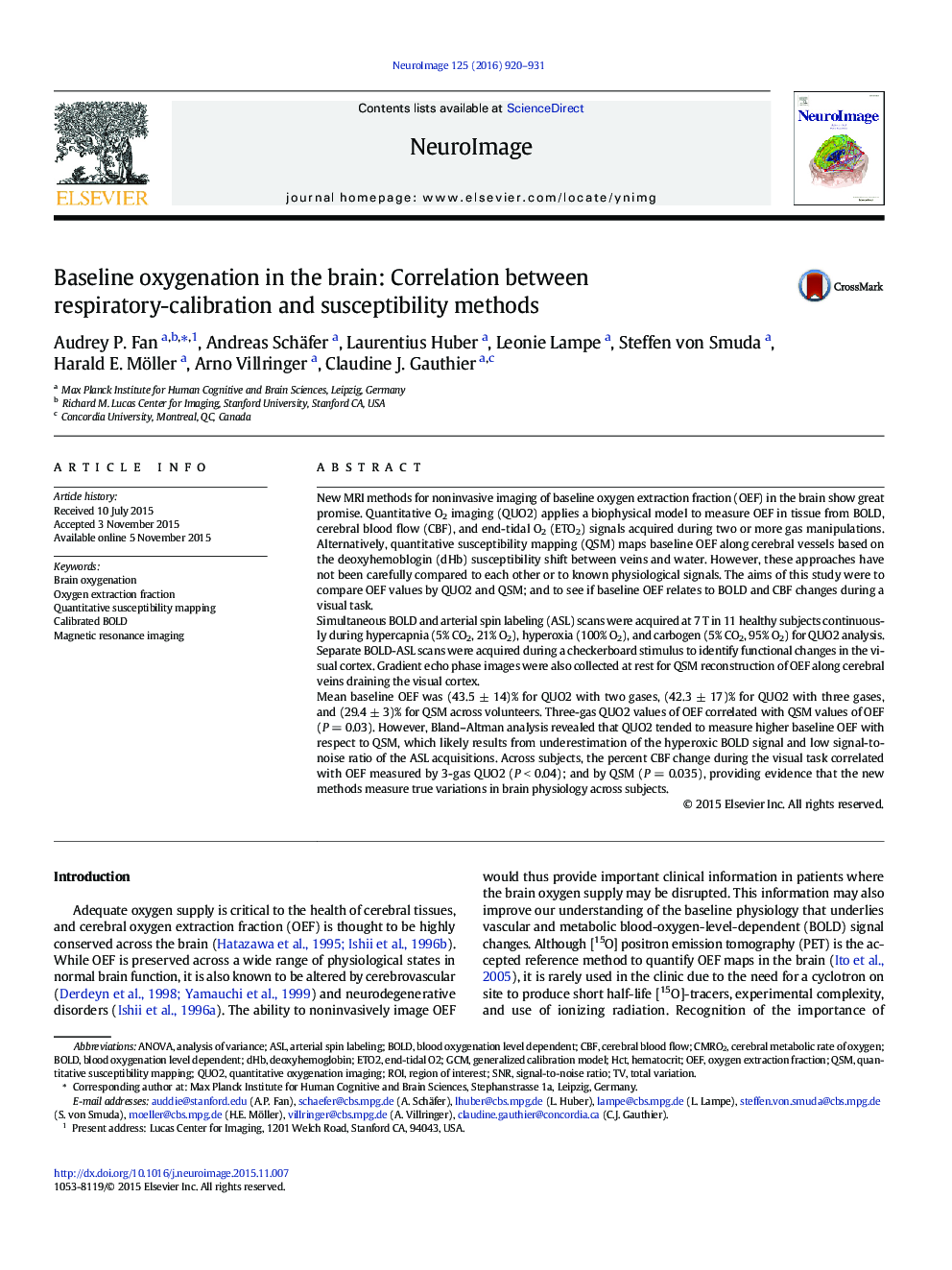| کد مقاله | کد نشریه | سال انتشار | مقاله انگلیسی | نسخه تمام متن |
|---|---|---|---|---|
| 6024201 | 1580883 | 2016 | 12 صفحه PDF | دانلود رایگان |
- We compared two MRI methods to image oxygen extraction fraction (OEF): QUO2 and quantitative susceptibility mapping (QSM).
- OEF values from QUO2 with three gas challenges correlated with OEF values from QSM in cerebral veins.
- QUO2 measurements of OEF depend on accurate measurement of the hyperoxic BOLD signal.
- Blood flow changes during visual stimulation correlated with baseline OEF by both methods.
New MRI methods for noninvasive imaging of baseline oxygen extraction fraction (OEF) in the brain show great promise. Quantitative O2 imaging (QUO2) applies a biophysical model to measure OEF in tissue from BOLD, cerebral blood flow (CBF), and end-tidal O2 (ETO2) signals acquired during two or more gas manipulations. Alternatively, quantitative susceptibility mapping (QSM) maps baseline OEF along cerebral vessels based on the deoxyhemoblogin (dHb) susceptibility shift between veins and water. However, these approaches have not been carefully compared to each other or to known physiological signals. The aims of this study were to compare OEF values by QUO2 and QSM; and to see if baseline OEF relates to BOLD and CBF changes during a visual task.Simultaneous BOLD and arterial spin labeling (ASL) scans were acquired at 7 T in 11 healthy subjects continuously during hypercapnia (5% CO2, 21% O2), hyperoxia (100% O2), and carbogen (5% CO2, 95% O2) for QUO2 analysis. Separate BOLD-ASL scans were acquired during a checkerboard stimulus to identify functional changes in the visual cortex. Gradient echo phase images were also collected at rest for QSM reconstruction of OEF along cerebral veins draining the visual cortex.Mean baseline OEF was (43.5 ± 14)% for QUO2 with two gases, (42.3 ± 17)% for QUO2 with three gases, and (29.4 ± 3)% for QSM across volunteers. Three-gas QUO2 values of OEF correlated with QSM values of OEF (P = 0.03). However, Bland-Altman analysis revealed that QUO2 tended to measure higher baseline OEF with respect to QSM, which likely results from underestimation of the hyperoxic BOLD signal and low signal-to-noise ratio of the ASL acquisitions. Across subjects, the percent CBF change during the visual task correlated with OEF measured by 3-gas QUO2 (P < 0.04); and by QSM (P = 0.035), providing evidence that the new methods measure true variations in brain physiology across subjects.
Journal: NeuroImage - Volume 125, 15 January 2016, Pages 920-931
